Handmade Baby Gifts: Quilting Projects to Try
There's something truly magical about handmade baby gifts. They carry a warmth and personal touch that store-bought items simply can't match. When you quilt for a new arrival, you're not just creating a blanket; you're crafting a cherished memory that will last a lifetime. Whether you're a seasoned quilter or just starting out, diving into quilting projects for babies can be a delightful and fulfilling experience. Imagine the joy on a parent's face when they receive a quilt made with love, tailored just for their little one. It’s like wrapping a baby in a hug made of fabric!
In this article, we’ll explore various quilting projects that are perfect for celebrating new arrivals. From choosing the right fabrics to finishing touches that add a personal flair, we’ll guide you through the entire process. Think of this as your roadmap to creating beautiful quilts that not only keep babies warm but also serve as heirlooms passed down through generations. So, grab your fabric stash and let’s get started on a journey filled with creativity and love!
Before we dive into the specifics, let’s take a moment to consider why quilting is such a wonderful choice for baby gifts. Quilts are not only practical; they can also be incredibly artistic. Each quilt tells a story, reflecting the personality of the maker and the recipient. They can be designed in vibrant colors to stimulate a baby's senses or in soft pastels to create a serene environment. The possibilities are endless! Plus, quilting is a fantastic way to use up leftover fabric, turning scraps into something beautiful and meaningful.
As we move forward, we'll discuss essential aspects of quilting, including fabric selection, tools, and patterns. You'll find that quilting is not just a craft; it’s a way to express your love and creativity. So, whether you’re looking to make a simple patchwork quilt or something more elaborate, this guide will provide you with the inspiration and information you need to create stunning handmade gifts for the little ones in your life.
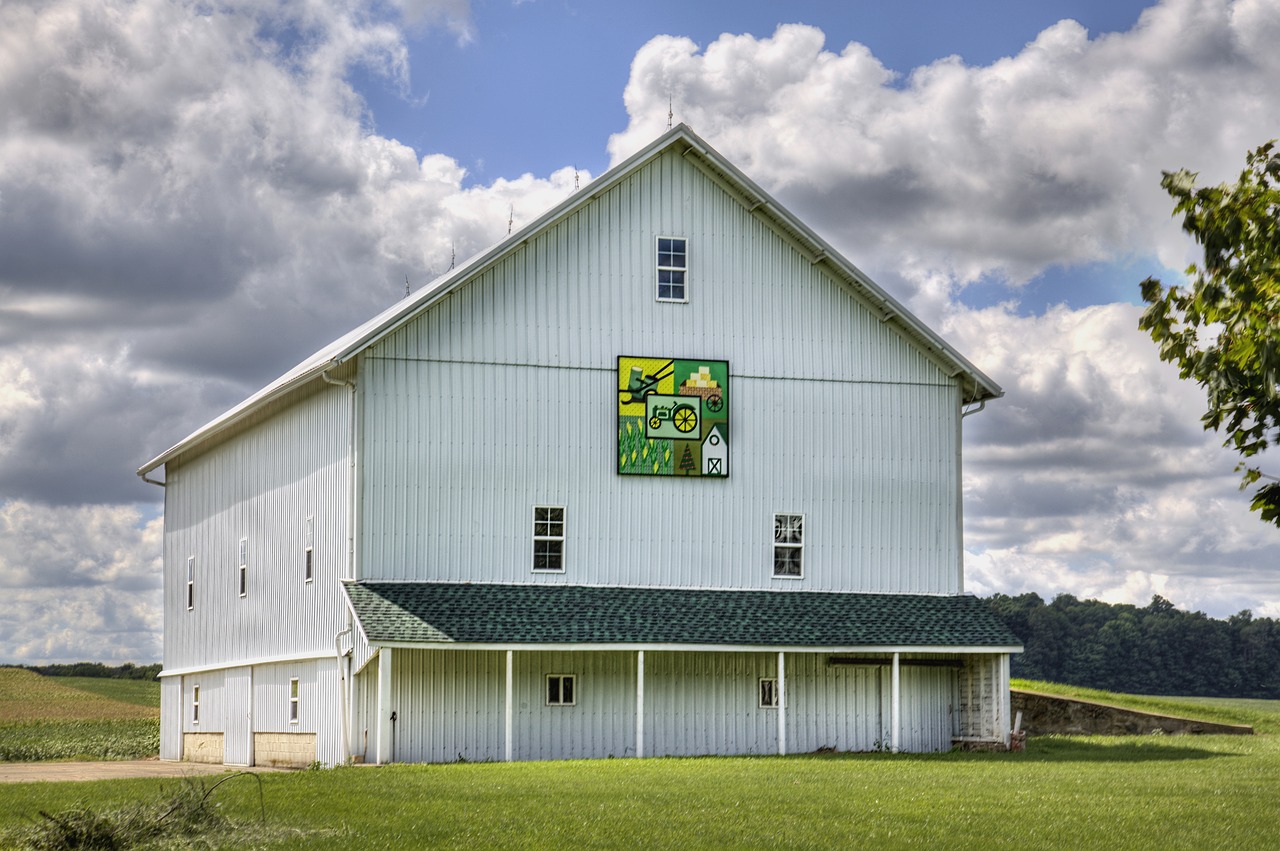
Choosing the Right Fabrics
When it comes to quilting for babies, is a fundamental step that can make or break your project. Think about it: you're crafting a gift for a little one, and you want it to be not only beautiful but also safe and comfortable. So, what should you consider when selecting fabrics? First off, prioritize softness. Babies have delicate skin, and rough materials can lead to discomfort. Cotton is a popular choice because it's gentle and breathable, making it ideal for a cozy quilt.
Next, durability is key. Infants are notorious for their messes, so your quilt needs to withstand frequent washing and wear. Look for fabrics that are not only soft but also high-quality and long-lasting. Additionally, consider the fabric's colorfastness; you don't want the colors to bleed or fade after a few washes. To help you visualize your options, here's a quick comparison of some common fabric types:
| Fabric Type | Softness | Durability | Washability |
|---|---|---|---|
| Cotton | High | High | Excellent |
| Flannel | Very High | Medium | Good |
| Muslin | Medium | Medium | Excellent |
| Fleece | High | High | Good |
Moreover, think about the design and color of the fabrics. You want to create a quilt that not only serves a purpose but also looks adorable! Bright colors and fun patterns can stimulate a baby's visual senses, while softer pastel shades can create a calming atmosphere. Don't hesitate to mix and match prints and solids to create a unique aesthetic that reflects your personal style.
Lastly, always check for any chemical treatments on the fabrics. Some materials may have been treated with substances that could be harmful to infants. Opt for organic fabrics when possible, as they are free from harmful chemicals and dyes. By paying attention to these details, you’ll ensure that your handmade baby quilt is not only a beautiful gift but also a safe and cherished keepsake for years to come.

Essential Quilting Tools
Before diving into the world of quilting, it's essential to equip yourself with the right tools. Think of these tools as your trusty sidekicks, each playing a vital role in transforming your fabric into a beautiful quilt. Having the right equipment not only enhances your efficiency but also makes the quilting experience a whole lot more enjoyable. Imagine trying to bake a cake without measuring cups or a mixer; quilting is no different. You need your tools to create that masterpiece!
First up, let's talk about cutting tools. Precision is key in quilting, and having quality cutting tools can significantly affect your results. A rotary cutter is a quilter's best friend; it allows you to cut through multiple layers of fabric with ease. Pair it with a cutting mat to protect your surfaces, and you'll be cutting like a pro in no time. Scissors are also essential, especially for detailed work. Make sure to invest in a good pair of fabric scissors that can glide through your materials effortlessly.
Next, we have measuring tools. Accurate measurements are crucial for a successful quilt. A measuring tape is a must-have for checking lengths, while quilting rulers can help you cut straight lines and angles. Don't forget templates, which can be particularly handy for intricate designs. Imagine trying to assemble a puzzle without knowing where the pieces fit; that's what quilting without proper measurements feels like!
Another critical aspect of quilting is pressing tools. Pressing seams is vital to achieving crisp edges and professional-looking results. A reliable iron can work wonders, especially one with steam functions. Additionally, a pressing mat can provide a better surface for pressing your fabric, ensuring that your seams lay flat and your quilt looks polished. Think of pressing as the finishing touch that elevates your quilt from 'nice' to 'wow!'
Finally, let's not forget about sewing machines. A good sewing machine is like a reliable car; it should get you where you need to go without any hiccups. When choosing a sewing machine, look for features that suit your quilting style. Some machines come with built-in stitches specifically for quilting, while others offer adjustable speed settings. It's worth doing a little research and testing out a few models to find the one that feels just right for you.
In summary, having the right tools can make all the difference in your quilting journey. With your cutting, measuring, pressing, and sewing tools at your side, you'll be well on your way to creating beautiful quilts that celebrate the joy of new life. So, gather your supplies, and let your creativity flow!
Q: What is the best fabric to use for baby quilts?
A: Soft, breathable cotton fabrics are ideal for baby quilts. They are gentle on a baby's skin and come in a variety of colors and patterns.
Q: Do I need an expensive sewing machine to quilt?
A: While a high-quality machine can make quilting easier, you don’t need to break the bank. Many mid-range machines have the necessary features for quilting.
Q: How long does it take to complete a quilt?
A: The time it takes to complete a quilt varies based on complexity and your skill level. A simple quilt can take a few hours, while more intricate designs may take several days or weeks.
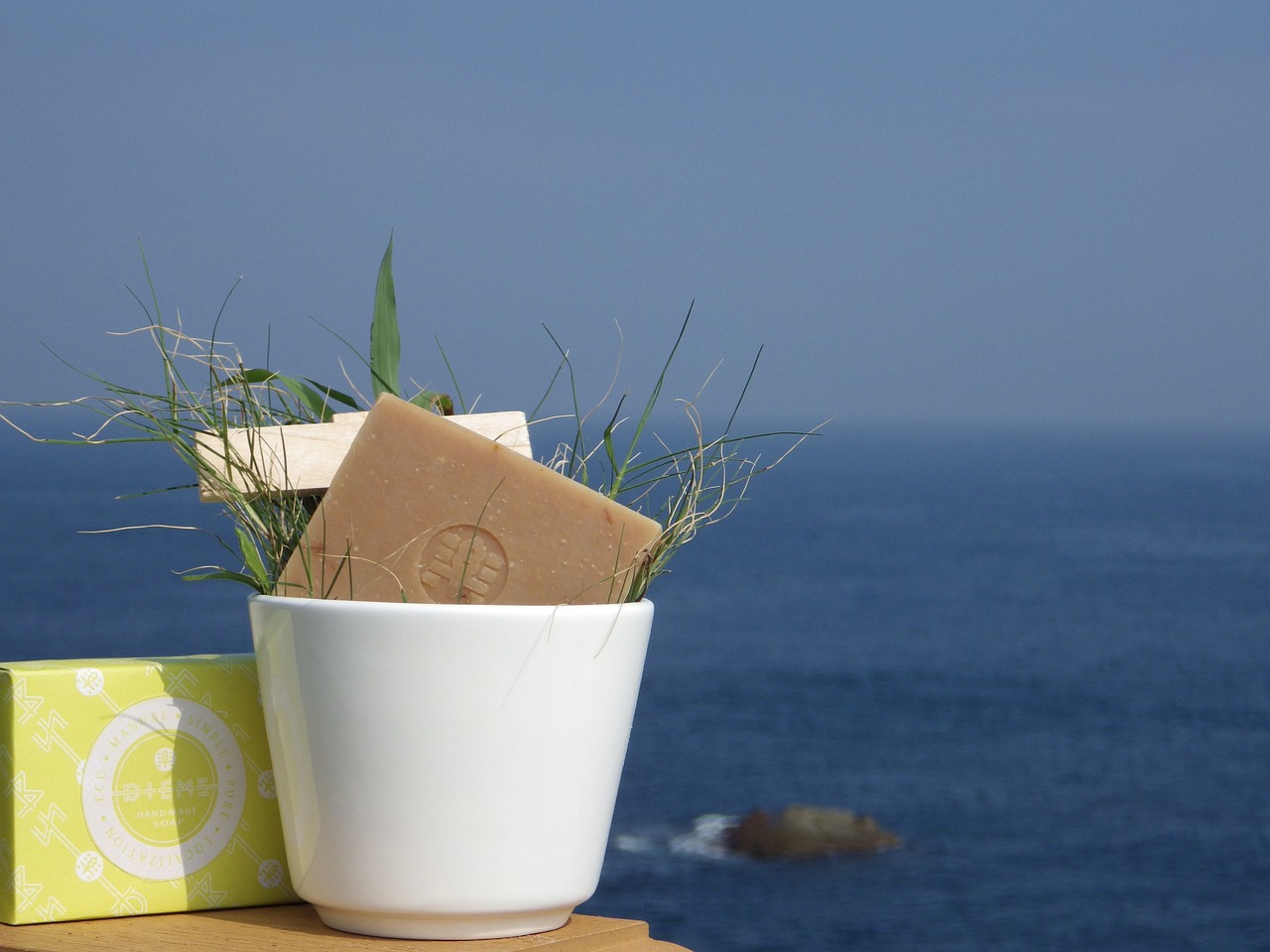
Cutting Tools
When it comes to quilting, the right cutting tools can make all the difference between a smooth, enjoyable experience and a frustrating one. Imagine trying to carve a masterpiece out of wood with a dull knife; it just doesn’t work! Similarly, using high-quality cutting tools can elevate your quilting projects to new heights, ensuring precision and efficiency as you create beautiful pieces for those precious little ones.
First up, let’s talk about rotary cutters. These handy tools are a quilter's best friend, allowing you to slice through multiple layers of fabric with ease. The circular blade spins as you roll it over the fabric, providing clean cuts that are crucial for piecing together your quilt. When selecting a rotary cutter, look for one with a comfortable grip and a safety feature to protect those fingers. Pair it with a cutting mat to protect your surfaces and prolong the life of your blades. A good cutting mat is marked with grids and measurements, making it easier to align your fabric accurately.
Next, we have scissors, which are essential for those more intricate cuts. While rotary cutters are fantastic for straight lines and large pieces, scissors come in handy for trimming threads or cutting out small shapes. Invest in a pair of fabric scissors that are sharp and specifically designed for cutting fabric. This will ensure that your cuts are clean and precise, which is especially important when working with delicate materials.
Now, let’s not forget about the importance of a good cutting ruler. This tool is vital for measuring and guiding your cuts. A clear acrylic ruler with grid lines will help you align your fabric accurately, ensuring that each piece is cut to the desired size. When using a ruler, make sure it’s wide enough to stabilize your rotary cutter and long enough to accommodate the length of your fabric. You might even want to consider a ruler with 30, 45, and 60-degree angles marked on it for those creative quilt designs that require angled cuts.
In summary, investing in quality cutting tools like rotary cutters, fabric scissors, and measuring rulers can significantly enhance your quilting experience. Not only do these tools provide accuracy, but they also save you time and reduce frustration. So, before you dive into your next quilting project, make sure your cutting tools are up to par. Happy quilting!
- What is the best rotary cutter for beginners? A 45mm rotary cutter is often recommended for beginners due to its versatility and ease of use.
- How often should I replace my rotary cutter blade? It's a good idea to replace your blade every 4-6 weeks, depending on how frequently you quilt.
- Can I use regular scissors for quilting? While you can, it's best to use fabric scissors to ensure clean cuts and prevent fraying.
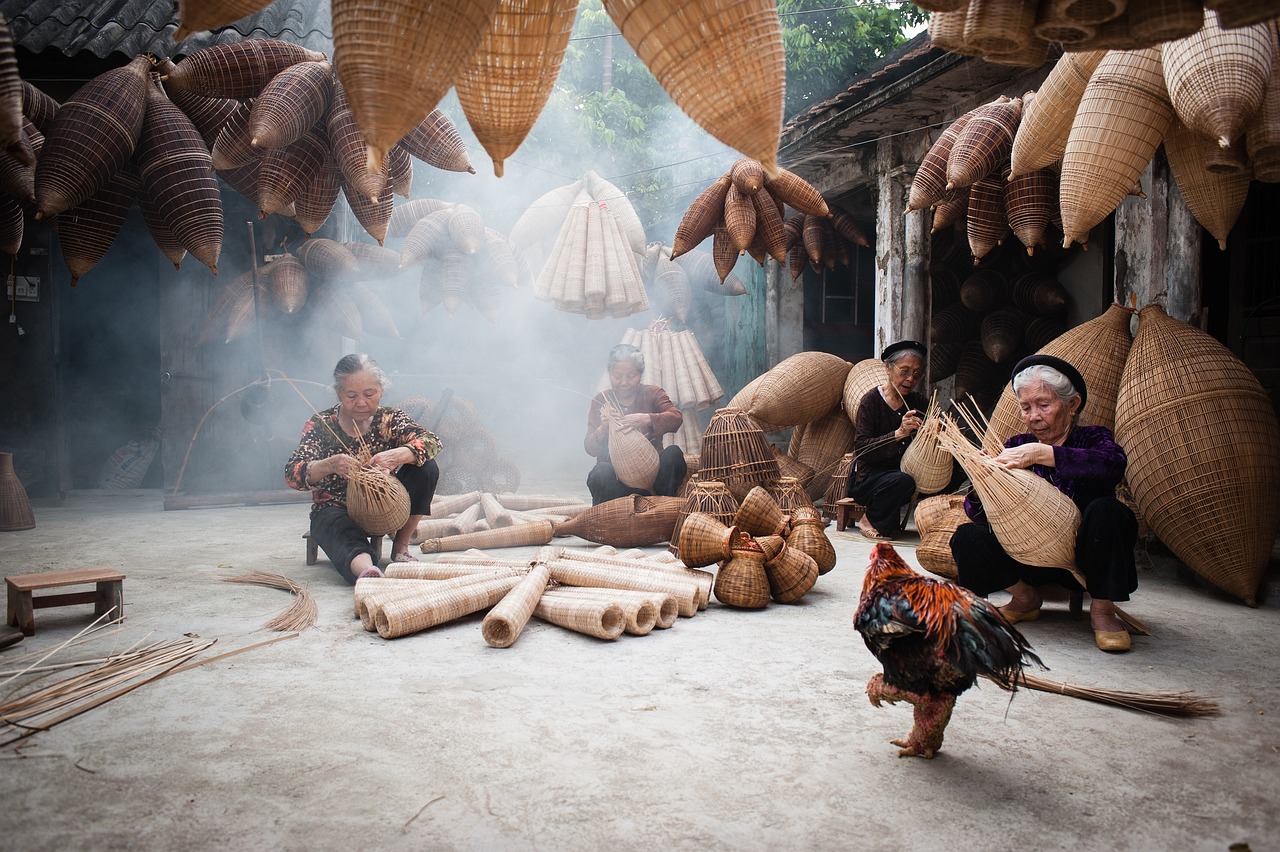
Measuring Tools
When it comes to quilting, accuracy is everything. The difference between a quilt that looks professional and one that looks homemade often boils down to how well you measure your fabric. So, let’s dive into the essential measuring tools that every quilter should have in their arsenal. First off, a good measuring tape is a must-have. It’s flexible, making it perfect for measuring curved edges and odd shapes. This tool is especially handy when you’re working with fabric that doesn’t lie flat, like soft cotton or flannel. You’ll be amazed at how much easier it is to achieve precise cuts when you take the time to measure accurately.
Next on the list are rulers. A clear acrylic ruler is invaluable for quilting. Look for one that features grid lines and measurements in both inches and centimeters, as this will help you with a variety of projects. These rulers allow you to cut straight lines and ensure your pieces fit together perfectly. You can use them to measure the width of your strips or to mark out the dimensions of your quilt squares. And don’t forget about the rotary cutting mat. This mat not only protects your surfaces but also provides a grid that works harmoniously with your ruler for even greater accuracy.
Another tool worth mentioning is the template. Templates are particularly useful for intricate shapes or when you want to cut multiple pieces of the same size. You can create your own templates from cardboard or purchase them pre-made. Just remember to use a sharp rotary cutter to ensure clean edges. Templates can save you time and effort, especially when you’re working on larger projects or repeating patterns.
In summary, having the right measuring tools at your disposal can transform your quilting experience. With a measuring tape, rulers, and templates, you will be well on your way to creating stunning quilts that are not only beautiful but also precise. Remember, the more careful you are with your measurements, the more professional your finished product will look. So, invest in these tools, and watch your quilting skills soar!

Pressing Tools
When it comes to quilting, play a pivotal role in achieving that professional finish we all crave. Imagine trying to sculpt a masterpiece out of clay without the right tools—frustrating, right? The same goes for quilting! Having the right pressing tools can elevate your project from just okay to absolutely stunning. So, what should you have in your quilting arsenal?
First and foremost, an iron is essential. But not just any iron will do! Look for one that has a good steam function and a smooth soleplate. This will help you press seams open effectively, ensuring that your fabric lies flat and your quilt looks sharp. A lightweight iron is also a great choice, as it allows you to maneuver easily without straining your wrist. Additionally, consider an iron with an automatic shut-off feature for safety and peace of mind.
Next up is the pressing mat. Investing in a quality mat can make a world of difference. Unlike a regular ironing board, a pressing mat is designed specifically for quilting. It provides a firm surface that helps distribute heat evenly, allowing for better pressing. Some mats even come with printed grids or angles, which can be incredibly helpful for aligning your fabric accurately. You might be wondering, "Do I really need a special mat?" Absolutely! It’s like using a canvas that enhances your painting skills—your quilts will thank you.
Another nifty tool to have is a clapper. This wooden tool is used to press seams flat after ironing. The clapper works by absorbing the heat and moisture from the fabric, which helps to set the seams in place. It’s particularly useful for bulky seams, giving your quilt a crisp, professional look. Just think of it as the finishing touch that turns a good quilt into a great one!
Lastly, don’t overlook the importance of a tailor's ham. This tool is shaped like a small pillow and is perfect for pressing curves and darts. It allows you to get into those tricky areas that a flat surface simply can’t handle. Using a tailor’s ham is like having a personal assistant who helps you tackle the most challenging parts of your project with ease.
In summary, having the right pressing tools can make your quilting experience smoother and more enjoyable. Whether it’s a reliable iron, a specialized pressing mat, a handy clapper, or a tailor's ham, each tool contributes to the overall quality of your work. So, don’t skimp on these essentials! They are the unsung heroes that help you create quilts that not only look good but also stand the test of time.
- What is the best type of iron for quilting? A steam iron with a smooth soleplate and an automatic shut-off feature is ideal for quilting.
- Do I really need a pressing mat? Yes! A pressing mat provides a firm surface that helps distribute heat evenly, improving your pressing results.
- How do I use a clapper? After pressing a seam, place the clapper on top to absorb heat and moisture, setting the seam for a crisp finish.
- What is a tailor's ham used for? A tailor's ham is used for pressing curves and darts, helping you achieve a professional look in those tricky areas.
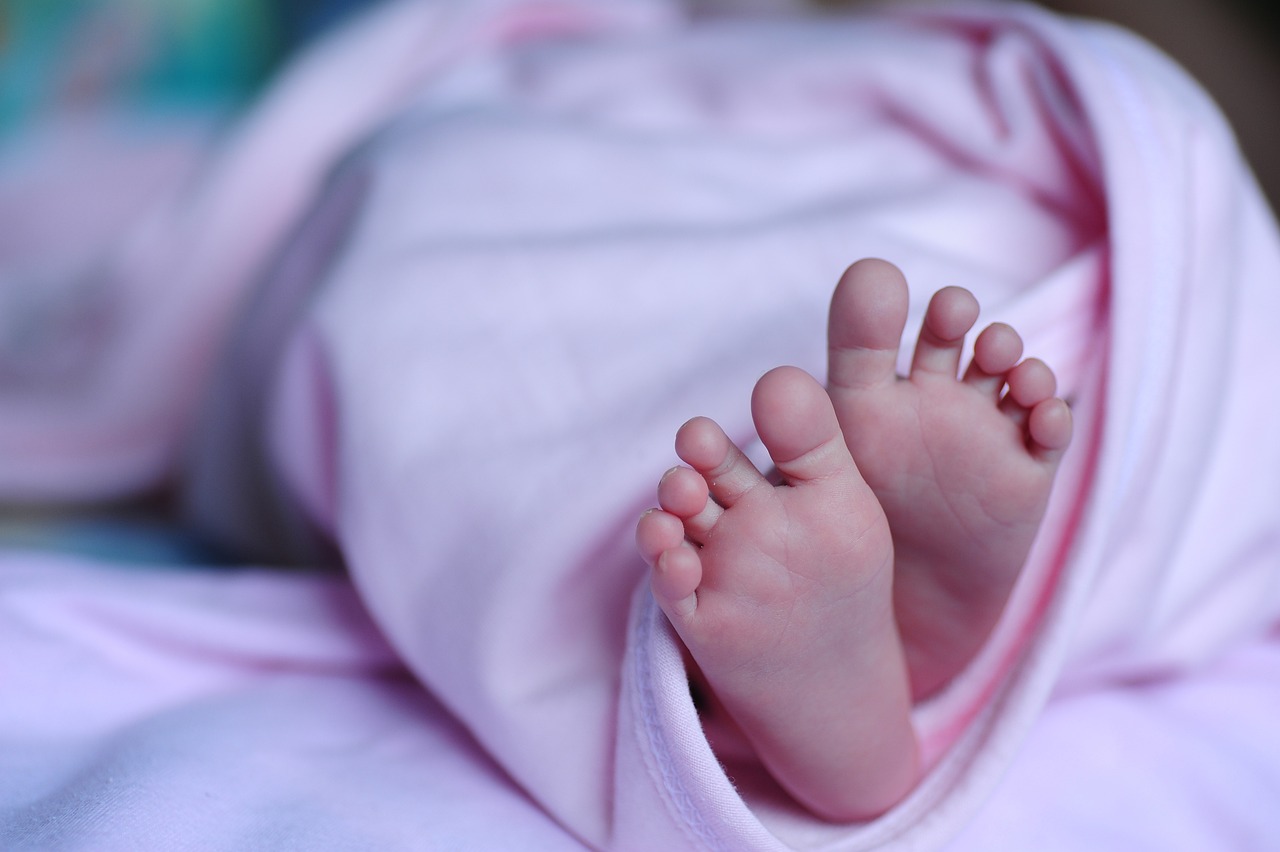
Sewing Machines
When it comes to quilting, a reliable sewing machine is truly a quilter's best friend. Imagine embarking on a creative journey where your ideas come to life with just the push of a pedal. But not all sewing machines are created equal! Choosing the right one can feel a bit overwhelming, especially with so many options available. You want a machine that not only meets your quilting needs but also makes the process enjoyable.
First and foremost, consider the features that are essential for quilting. Look for machines that offer a variety of stitch options, particularly those designed for quilting. A machine with a walking foot is a game-changer, as it helps to feed multiple layers of fabric evenly, preventing any puckering or misalignment. Additionally, a free-motion quilting foot can open up a whole new world of creativity, allowing you to create intricate designs that add character to your quilts.
Another aspect to keep in mind is the throat space. This refers to the area between the needle and the body of the machine. A larger throat space is beneficial for quilting larger projects as it provides ample room to maneuver your fabric. If you plan to work on big quilts, investing in a machine with a generous throat space will save you a lot of frustration.
Don't forget about the stitch speed as well. Some machines offer adjustable speeds, allowing you to slow down for detailed work or speed up for simple straight lines. This flexibility can significantly enhance your quilting experience, making it more enjoyable and less stressful.
As you dive deeper into the world of quilting, you might find yourself wondering about the best brands. While personal preference plays a big role, here are a few popular brands that quilters swear by:
| Brand | Key Features |
|---|---|
| Brother | Affordable, user-friendly, great for beginners |
| Singer | Classic designs, reliable, good for various fabric types |
| Bernina | High-end, excellent stitch quality, durable |
| Janome | Innovative features, great for quilting, smooth operation |
Ultimately, the best sewing machine for you will depend on your quilting style and personal preferences. Take the time to test out different machines if you can, and don’t hesitate to ask for recommendations from fellow quilters. Remember, your sewing machine should feel like an extension of your creativity, not a hindrance.
So, as you embark on your quilting adventures, invest in a machine that excites you and meets your needs. With the right sewing machine by your side, the possibilities for creating beautiful, handmade baby gifts are endless!
Here are some common questions that may arise as you explore the world of sewing machines and quilting:
- What is the best sewing machine for beginners? - Many beginners find machines from Brother or Singer to be user-friendly and affordable.
- Do I need a special sewing machine for quilting? - While you can quilt on a standard sewing machine, a machine with a walking foot and larger throat space will make the process much easier.
- How much should I spend on a sewing machine? - It varies based on your needs, but you can find quality machines ranging from $200 to over $1,000.
- Can I use my sewing machine for other crafts? - Absolutely! Many sewing machines are versatile and can handle various fabric projects beyond quilting.

Simple Quilt Patterns for Beginners
If you're just stepping into the wonderful world of quilting, you might feel a mix of excitement and intimidation. But fear not! Starting with simple quilt patterns can be the perfect way to ease into this craft while still creating something beautiful and meaningful. Think of quilting like cooking; just as you wouldn’t start with a five-course meal, you wouldn’t want to jump into complex quilt designs right away. Instead, let’s explore some easy patterns that will help you build your skills and confidence.
One of the most accessible patterns for beginners is the patchwork quilt. This pattern allows you to use various fabric scraps, making it not only a great way to reduce waste but also a fun way to showcase different colors and textures. Imagine piecing together a quilt that tells a story through its fabric; each square could represent a moment, a memory, or even a season. To make a patchwork quilt, you simply cut your fabric into squares or rectangles and sew them together in a way that pleases your eye. The beauty of this pattern is that it can be as organized or as chaotic as you like!
Another excellent choice for beginners is the strip quilt. This method involves sewing long strips of fabric together to create a stunning design. Think of it as building a fence; you lay down one board at a time, and before you know it, you have a beautiful structure. Strip quilts can be made with just two colors or a multitude of patterns, giving you the freedom to express your creativity. Plus, they come together quickly, which is a huge bonus when you're eager to see your finished project!
For those who enjoy a bit of structure, the nine-patch quilt is a fantastic option. This classic pattern consists of a grid of nine squares, arranged in a way that creates a visually appealing layout. You can easily customize the color palette to match any nursery or child's room, making it a perfect gift for new parents. As you sew each square, you’ll find that the repetitive nature of this pattern is both meditative and rewarding, allowing you to hone your skills with each stitch.
Once you've chosen your pattern, the next step is to select your fabrics. Remember, the right fabric can make or break your quilt. Look for materials that are soft and durable, as they will be gentle against a baby's skin. Cotton is often the go-to choice for many quilters due to its breathability and ease of handling. You might also want to consider pre-cuts, which are bundles of fabric already cut into specific shapes and sizes. This can save you time and effort, allowing you to focus on the fun part—sewing!
In summary, starting with simple quilt patterns not only helps you build your quilting skills but also allows you to create beautiful, heartfelt gifts for the little ones in your life. Whether you choose a patchwork, strip, or nine-patch quilt, you’ll find joy in the process and pride in your finished creation. So, grab your fabrics and tools, and let your creativity flow!
- What type of fabric is best for baby quilts? Cotton is highly recommended due to its softness and durability. Always choose fabrics that are safe for infants.
- How long does it take to make a simple quilt? Depending on your skill level and the complexity of the design, a simple quilt can take anywhere from a few hours to a couple of days.
- Can I use a sewing machine for quilting? Absolutely! A sewing machine can significantly speed up the process and provide more precise stitches.
- What tools do I need to start quilting? Essential tools include fabric scissors, rotary cutters, cutting mats, measuring tapes, and a reliable sewing machine.
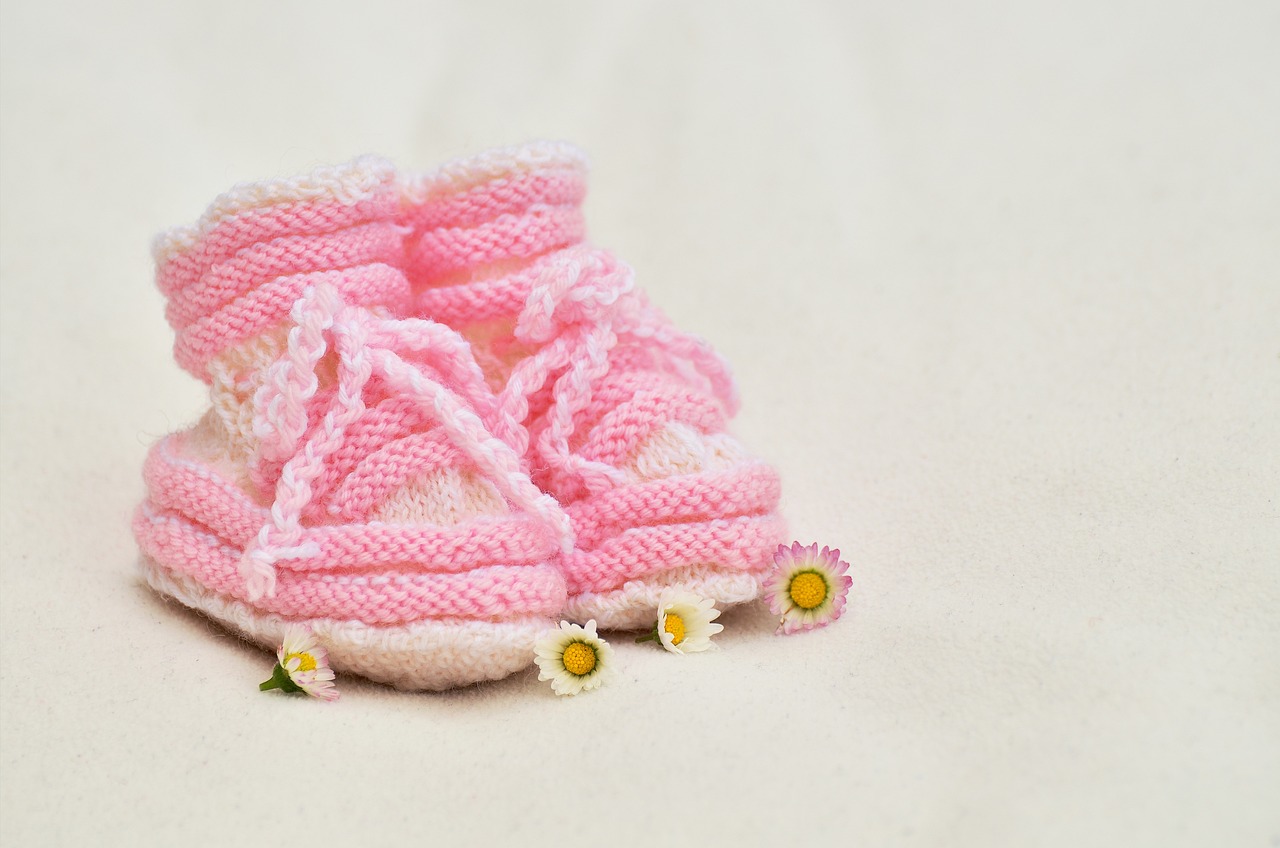
Patchwork Quilts
Patchwork quilts are not just a beautiful way to keep warm; they are a canvas for creativity and a celebration of resourcefulness. Imagine taking leftover fabric scraps from various projects—those remnants that would otherwise gather dust—and transforming them into a stunning quilt that tells a story. Each piece of fabric carries its own history, and when stitched together, they create a tapestry of memories. This is the essence of patchwork quilting!
Starting a patchwork quilt can feel like embarking on a delightful treasure hunt. You can gather fabrics from your own stash, visit local fabric shops, or even repurpose old clothes. The beauty of patchwork lies in its versatility; you can mix and match patterns, colors, and textures to create something uniquely yours. Whether you prefer bold prints or soft pastels, the options are limitless!
To begin your patchwork quilt, you'll need to plan your design. Here’s a simple approach to get started:
- Choose a Color Palette: Select colors that complement each other. This can be a mix of shades or a monochromatic scheme.
- Decide on the Size: Determine how large you want your quilt to be. This will dictate how many squares or pieces you'll need.
- Cut Your Fabrics: Use a rotary cutter for precise cuts. Aim for uniformity to ensure a neat finish.
- Arrange Your Pieces: Before sewing, lay out your fabric pieces to find a layout that pleases your eye. Don't hesitate to rearrange until it feels just right!
Once you’ve arranged your pieces, the sewing begins! Patchwork quilts are typically made by sewing squares or rectangles together in rows and then joining those rows. This method not only makes the process straightforward but also allows for endless creativity in how you combine the fabrics. As you sew, you'll find that the quilt begins to take shape, and with each stitch, the excitement builds.
One of the most rewarding aspects of making a patchwork quilt is the ability to personalize it further. You can add unique touches, such as:
- Embellishments: Consider adding buttons, embroidery, or fabric paint to enhance the design.
- Quilting Patterns: Once assembled, you can quilt over the top in various patterns, adding texture and depth to your creation.
- Special Fabrics: Incorporate fabrics that have special meaning, like a piece from a loved one's shirt or a fabric from a memorable trip.
Patchwork quilts are not just functional; they are pieces of art that can be cherished for generations. They make thoughtful gifts for new parents, offering warmth and comfort while also serving as a unique keepsake. Plus, the process of creating one can be incredibly fulfilling, allowing you to express your creativity while connecting with the fabric of your life.
In conclusion, diving into the world of patchwork quilting is like opening a door to a realm of endless possibilities. Whether you’re a seasoned quilter or just starting out, the joy of stitching together pieces of fabric into a beautiful quilt is an experience you won’t want to miss. So gather those scraps, fire up your sewing machine, and let your imagination run wild!
Q: What is the best fabric for patchwork quilts?
A: Cotton is the most popular choice due to its softness and durability. However, you can also experiment with flannel, linen, or even specialty fabrics for unique textures.
Q: How do I care for my patchwork quilt?
A: To keep your quilt looking its best, wash it on a gentle cycle with cold water and tumble dry on low. Avoid bleach, as it can damage the fabric.
Q: Can I use old clothes for patchwork quilts?
A: Absolutely! Old clothes can add sentimental value and unique patterns to your quilt. Just make sure to wash and iron the fabric before cutting.
Q: How long does it take to make a patchwork quilt?
A: The time it takes can vary widely based on the quilt's size and complexity, but a simple quilt can take anywhere from a few hours to several weeks.

Strip Quilts
Strip quilts are a delightful and accessible way to dive into the world of quilting, especially for beginners. Imagine this: you have a bunch of fabric scraps lying around, remnants from previous projects, and instead of letting them gather dust, you can transform them into something beautiful! Strip quilts allow you to take long strips of fabric and sew them together in various patterns, creating stunning designs that are both visually appealing and full of character. The beauty of strip quilts lies in their simplicity and the freedom they offer; you can mix and match colors and patterns to your heart's content.
To start your strip quilt journey, you'll want to gather your fabric strips. These can be cut from larger pieces of fabric or even from your leftover scraps. The standard width for these strips is usually around 2.5 inches, but feel free to experiment with different widths to create unique effects. Once you have your strips ready, the next step is to decide on the layout. You can go for a traditional straight layout or get creative with a zigzag pattern. The possibilities are endless!
As you sew your strips together, you'll find that this method not only allows for creativity but also helps you practice your sewing skills. You may want to keep a few tips in mind:
- Press Your Seams: After sewing each strip, make sure to press the seams open. This will help your quilt lay flat and look polished.
- Use a Consistent Seam Allowance: Consistency is key in quilting. Aim for a seam allowance of 1/4 inch to ensure that your strips align perfectly.
- Play with Colors: Don’t be afraid to mix different colors and patterns. The charm of a strip quilt often lies in its eclectic nature!
Once you've sewn your strips together, you can add borders or additional embellishments if you wish. Strip quilts are also a great opportunity to practice your quilting techniques. You can try out different quilting patterns, from simple straight lines to more intricate designs, depending on your skill level and comfort.
In the end, strip quilts are not just about creating a beautiful blanket; they’re about enjoying the process and letting your creativity shine. Whether you’re making a quilt for a new baby or just for yourself, strip quilts provide a wonderful way to express your artistic flair. So, gather those fabric scraps, fire up your sewing machine, and let the quilting adventure begin!
Q: What types of fabrics are best for strip quilts?
A: It's best to use cotton fabrics as they are soft, durable, and easy to work with. However, you can also experiment with other materials like flannel for a cozy feel.
Q: How do I calculate how many strips I need?
A: The number of strips you need depends on the size of your quilt. For a baby quilt, around 20-30 strips should suffice. Measure the width and length of your desired quilt to get a more accurate count.
Q: Can I use pre-cut strips for my quilt?
A: Absolutely! Pre-cut strips, often called jelly rolls, are a great time-saver and come in beautiful coordinated fabric collections.

Creative Embellishments
When it comes to creating handmade baby gifts, the beauty often lies in the details. can transform a simple quilt into a cherished keepsake, adding personality and flair that resonates with the recipient. Think of embellishments as the icing on the cake; they elevate the overall aesthetic and make your gift truly special. From playful appliqué designs to intricate quilting stitches, the possibilities are endless, and they allow you to express your creativity while crafting something meaningful.
One of the most popular techniques for embellishing quilts is appliqué. This method involves sewing one piece of fabric onto another, creating shapes and designs that can range from whimsical animals to elegant floral patterns. You can use various fabrics, such as cotton, felt, or even minky, to achieve different textures and effects. Imagine a quilt adorned with cute little elephants or stars that can spark joy in a baby's room! To get started, you can use templates or freehand your designs, making the process as simple or as intricate as you desire.
Another way to add visual interest is through decorative quilting stitches. These stitches can be used not only to secure layers of fabric but also to create stunning patterns that enhance the quilt's overall look. For example, you might choose a zigzag stitch to outline an appliqué shape, or perhaps a scallop stitch to add a touch of whimsy along the edges. The choice of thread color can also make a big difference; a contrasting thread can make your stitches pop, while a matching thread can create a more subtle effect. The right stitch can turn an ordinary quilt into a work of art!
To illustrate some of these ideas, here’s a simple table showing different types of embellishments you might consider for your quilt:
| Embellishment Type | Description | Best Used For |
|---|---|---|
| Appliqué | Attaching fabric shapes onto the quilt | Shapes, characters, or decorative elements |
| Decorative Stitches | Using special stitches to enhance design | Edges, outlines, and patterns |
| Buttons and Beads | Adds texture and dimension | Personalized touches and accents |
| Embroidery | Stitching designs onto the fabric | Names, dates, or special messages |
Don't forget about the use of buttons and beads! These little accents can add a delightful touch to your quilt. They can be sewn onto the quilt to create eyes for animals or to add a bit of sparkle and texture. Just ensure that any embellishments you choose are safe for babies, avoiding anything that could pose a choking hazard. After all, safety is just as important as creativity!
Finally, consider incorporating embroidery into your quilts. This technique allows you to stitch names, dates, or sweet messages directly onto the fabric. Imagine a quilt that not only keeps a baby warm but also tells a story through carefully crafted words. It adds a personal touch that can be treasured for years to come. Plus, with the variety of embroidery stitches available, you can customize your message in a way that reflects your unique style.
In conclusion, the art of embellishing your quilts opens up a world of creativity. Whether you opt for appliqué, decorative stitches, or other embellishments, these techniques will not only enhance the visual appeal of your handmade gifts but also make them memorable. So, grab your supplies and let your imagination run wild—the perfect quilt awaits!
Q: What materials are best for baby quilts?
A: Soft, durable fabrics like cotton are ideal for baby quilts. Look for materials that are gentle on a baby's skin and can withstand frequent washing.
Q: Can I use my regular sewing machine for quilting?
A: Yes! Most regular sewing machines can handle quilting, but you may want to consider a machine with a walking foot for better fabric control.
Q: How do I care for a handmade quilt?
A: To maintain your quilt's beauty, wash it on a gentle cycle with cold water and tumble dry on low. Avoid bleach and harsh detergents.

Appliqué Techniques
Appliqué is a fantastic way to breathe life into your quilts, allowing you to add shapes, designs, and even personal touches that can transform a simple quilt into a cherished keepsake. The beauty of appliqué lies in its versatility; whether you're adding fun animal shapes for a baby quilt or intricate floral designs for a more sophisticated piece, the possibilities are endless. So, how do you get started with this delightful technique? Let’s explore some popular appliqué methods that can elevate your quilting game.
One of the most common techniques is the raw-edge appliqué. This method involves cutting out your desired shapes from fabric and sewing them directly onto the quilt top without any additional finishing on the edges. It’s quick, easy, and perfect for beginners! Just be mindful that over time, the edges may fray, giving it a charming, rustic look. For those who prefer a more polished finish, consider using the turned-edge appliqué technique. This involves folding the edges of your fabric shapes under before sewing them onto the quilt, resulting in a neat and clean appearance. Although it takes a bit more time and precision, the outcome is undoubtedly worth it.
Another popular method is fusible appliqué. This technique utilizes fusible webbing, which is a heat-activated adhesive that bonds your fabric shapes to the quilt. Simply trace your design onto the fusible web, cut it out, and adhere it to your fabric before cutting your shapes. This method is great for intricate designs and is especially useful if you want to avoid messy edges. Once your shapes are in place, you can secure them with a straight stitch, zigzag stitch, or even decorative stitches to add texture and interest.
If you’re feeling adventurous, you might want to try free-motion appliqué. This technique allows for a creative, almost doodle-like effect as you sew around your shapes without following a set path. It’s an excellent way to add a personal touch to your quilts, making each piece uniquely yours. You can experiment with various stitch patterns and thread colors to enhance the overall look of your quilt. Just remember, practice makes perfect, so don’t be discouraged if it takes a few tries to get the hang of it!
Regardless of the technique you choose, it’s essential to prepare your fabric properly. Always pre-wash your fabrics to prevent any shrinkage or color bleeding after your quilt is completed. Additionally, consider using a stabilizer to support your fabric during the appliqué process, especially if you’re working with lightweight or stretchy materials. This will help maintain the shape and integrity of your designs.
Incorporating appliqué into your quilting projects not only enhances their aesthetic appeal but also allows you to express your creativity in a fun and engaging way. Whether you're making a quilt for a newborn or creating a family heirloom, these techniques can add a personal touch that will be treasured for years to come.
Q: What is the best fabric to use for appliqué?
A: Cotton fabrics are generally the best choice for appliqué due to their durability, ease of handling, and wide variety of colors and patterns. However, you can also experiment with other fabrics like felt or linen for different textures.
Q: Do I need a special sewing machine for appliqué?
A: While a standard sewing machine will work for most appliqué techniques, having a machine with a free-motion quilting foot can be beneficial for free-motion appliqué. Additionally, machines that offer a variety of stitch options can enhance your designs.
Q: Can I wash my quilt after using appliqué?
A: Yes, you can wash your quilt; however, it’s advisable to wash it gently and avoid harsh detergents. If you’ve used raw-edge appliqué, expect some fraying, which can add to the charm of the quilt.
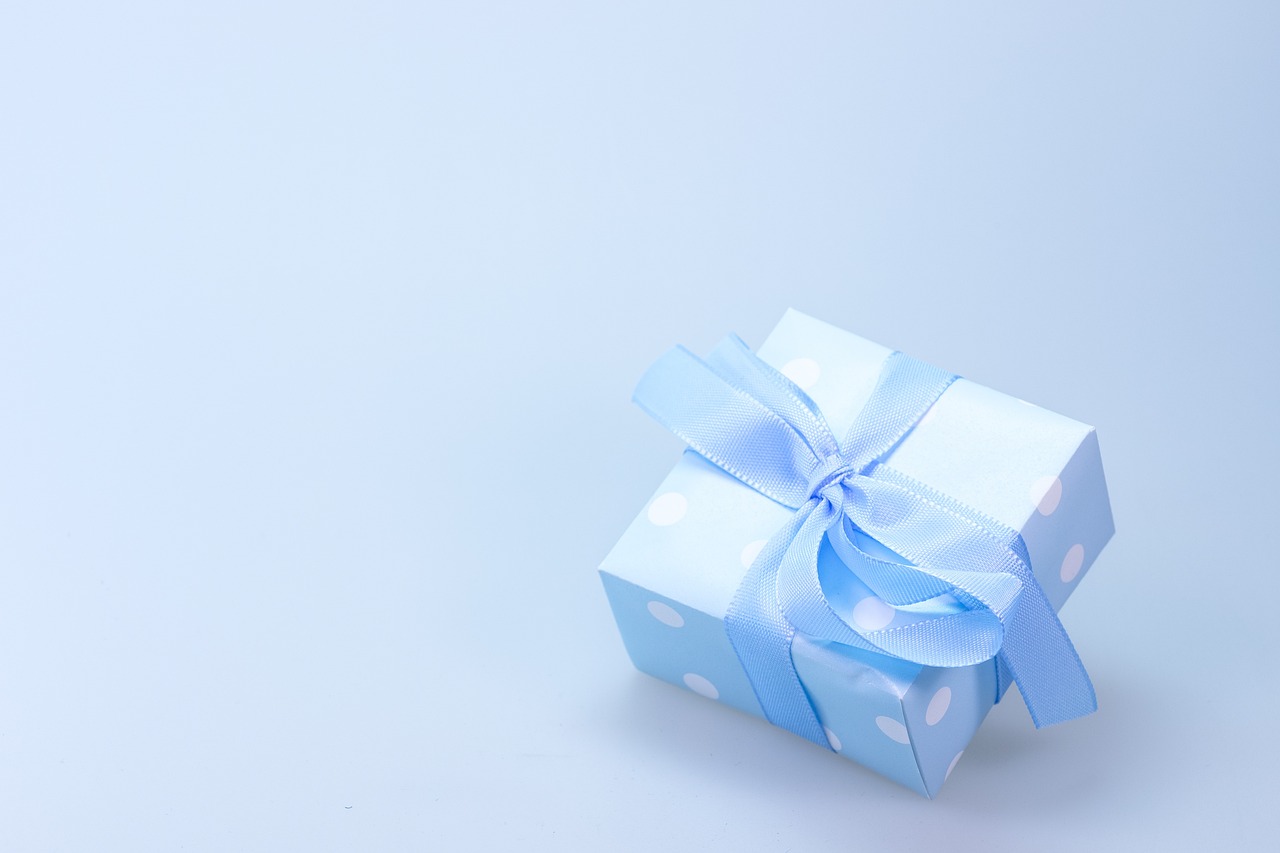
Quilting Stitches
When it comes to quilting, the choice of stitches can truly transform your project from ordinary to extraordinary. The right quilting stitches not only enhance the overall appearance of your quilt but also add texture and dimension, making it a feast for the eyes. Think of stitches as the brush strokes of a painter; they can convey emotion, style, and personality. So, how do you choose the perfect quilting stitches for your handmade baby gifts? Let's dive into some popular options!
One of the most common techniques is the straight stitch. This foundational stitch is simple yet effective, making it ideal for beginners. It creates clean lines and is perfect for outlining shapes or sewing pieces together. Imagine it as the backbone of your quilt, providing stability and support. However, don’t shy away from exploring more decorative options!
Another fantastic choice is the zigzag stitch. This stitch not only looks charming but also serves a functional purpose by preventing fraying at the edges of your fabric. It’s like a little protective hug for your quilt! You can use it creatively to add flair to your project—consider using contrasting thread colors to make your zigzag stitches pop.
For those who want to add a touch of elegance, free-motion quilting is an exciting technique to explore. This method allows you to “draw” with your sewing machine, creating intricate designs that can resemble anything from flowers to abstract patterns. It’s akin to doodling on fabric, giving you the freedom to express your artistic side. Just remember, practice makes perfect, so don’t be discouraged if your first attempts don’t turn out as expected!
In addition to these stitches, consider incorporating decorative stitches available on many modern sewing machines. These stitches can include scallops, waves, or even intricate motifs. They serve not just as functional elements but also as embellishments that can elevate your quilt’s aesthetic. Think of them as the jewelry that completes an outfit—adding that extra sparkle and personality!
To help you visualize the differences in stitching techniques, here’s a simple table summarizing some popular quilting stitches:
| Stitch Type | Description | Best For |
|---|---|---|
| Straight Stitch | A basic stitch that creates a straight line. | Joining fabric pieces, outlining shapes. |
| Zigzag Stitch | A stitch that forms a zigzag pattern, preventing fraying. | Finishing edges, adding decorative flair. |
| Free-Motion Quilting | Allows for creative designs by moving the fabric freely. | Intricate patterns, artistic expression. |
| Decorative Stitches | Special stitches that add visual interest. | Embellishing quilts, adding personality. |
In conclusion, the stitches you choose for your quilting projects can significantly impact the final result. Whether you opt for the simplicity of a straight stitch or the creativity of free-motion quilting, each stitch tells a story. So, grab your sewing machine, experiment with different techniques, and let your creativity flow. Remember, the beauty of quilting lies not just in the final product but in the joy of the journey!
- What is the best fabric for baby quilts? Soft, breathable cotton is an excellent choice for baby quilts as it is gentle on the skin and durable.
- How can I ensure my quilt lasts? Proper care, including gentle washing and avoiding harsh chemicals, can help maintain your quilt’s beauty for years.
- Can I use a regular sewing machine for quilting? Yes, many regular sewing machines can handle quilting, but a machine with a larger throat space is beneficial for bigger projects.
- How do I choose colors for my quilt? Consider the nursery colors, the baby's gender (if known), and your personal style when selecting fabrics.
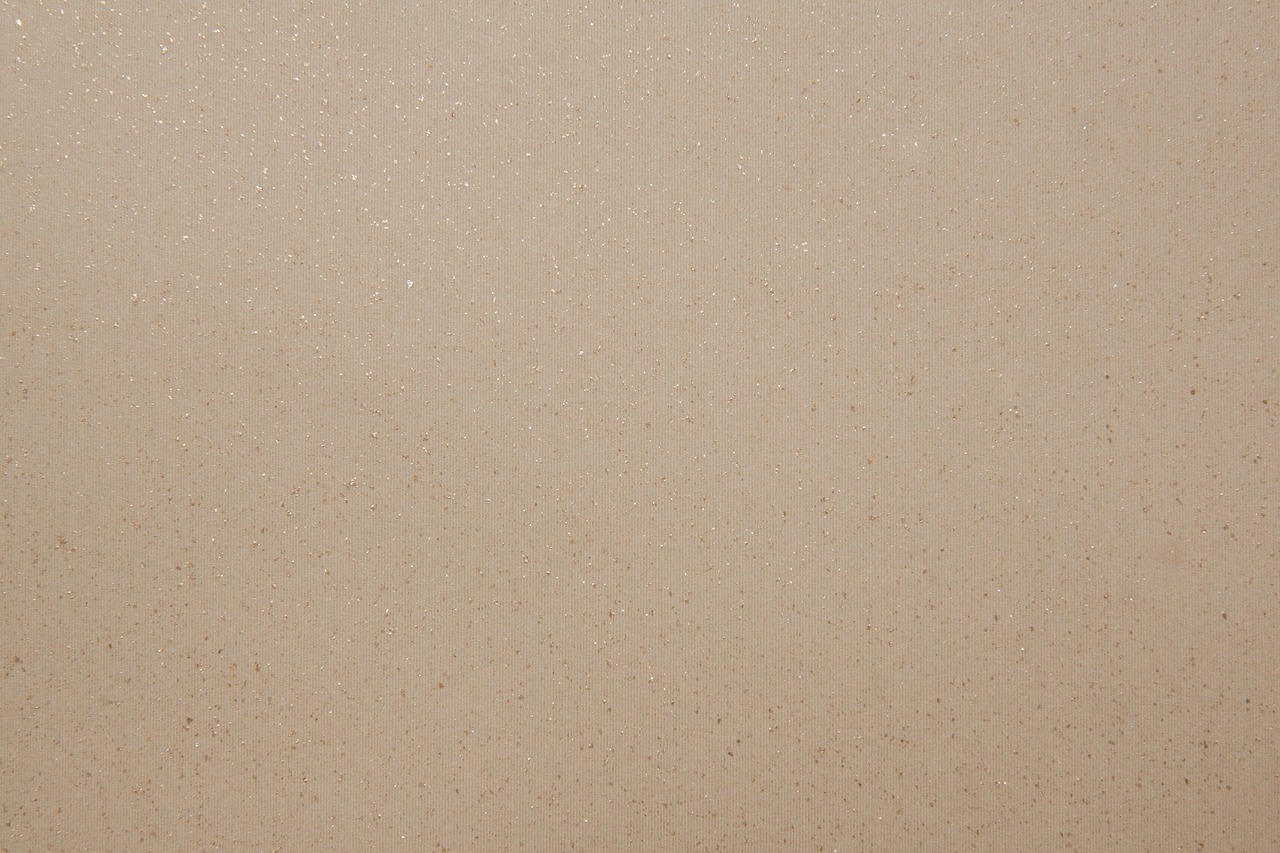
Finishing Touches
Completing your quilt is like putting the cherry on top of a sundae; it’s the finishing touch that makes all your hard work truly shine! After spending hours piecing together fabric, it’s essential to focus on the final steps that will ensure your quilt is not only beautiful but also durable. The finishing touches involve a few important steps: binding, labeling, and caring for your quilt. Each of these elements plays a crucial role in the longevity and overall presentation of your handmade gift.
Binding is perhaps the most critical finishing step. It’s like the frame around a painting; it brings everything together and gives your quilt a polished look. There are various binding techniques you can choose from, including:
- Single Fold Binding: This method is straightforward and perfect for beginners.
- Double Fold Binding: Offers a more durable finish and is often used for quilts that will see heavy use.
- Bias Binding: This technique is ideal for quilts with curved edges, as it allows the fabric to stretch without fraying.
Regardless of the method you choose, ensure that your binding is securely stitched to the quilt edges to prevent any fraying over time.
Next up is labeling. While it may seem like a small detail, a label adds a personal touch and provides a sense of history to your quilt. It’s a way to convey meaningful messages, such as the quilt’s name, the date it was made, or even a heartfelt note to the recipient. Here are a few creative ideas for labeling:
- Fabric Labels: You can create labels using fabric markers or printable fabric sheets.
- Embroidered Labels: For a more personalized touch, consider hand-embroidering your label.
- Quilt Tags: Attach a decorative tag with a message or the quilt's story.
Each label you create not only adds uniqueness but also tells a story that the recipient can cherish for years to come.
Finally, let’s talk about caring for your quilt. Just like a well-loved book, a quilt deserves to be treated with care. Proper maintenance will ensure that your quilt lasts for generations. Here are some tips to keep your quilt looking its best:
- Washing: Always follow the care instructions that come with your fabric. Most quilts can be machine washed on a gentle cycle, but it’s best to use cold water and a mild detergent.
- Drying: Air drying is the safest option, but if you choose to use a dryer, opt for a low heat setting to prevent shrinking.
- Storage: When not in use, store your quilt in a cool, dry place away from direct sunlight to prevent fading.
By giving your quilt the love and care it deserves, you ensure that it remains a treasured item for years to come.
Q: How do I choose the right fabric for my quilt?
A: Look for soft, durable materials that are safe for babies, such as cotton or flannel. Consider the colors and patterns that will complement your design vision.
Q: What tools do I need to start quilting?
A: Essential tools include a rotary cutter, cutting mat, measuring tape, quilting ruler, and a reliable sewing machine. These will help streamline your quilting process.
Q: Can I machine wash my quilt?
A: Yes, most quilts can be washed in a machine on a gentle cycle. Always check the care instructions for the specific fabrics you used.
Q: How can I personalize my quilt?
A: Adding a label with a special message, using appliqué techniques, or incorporating unique embellishments can personalize your quilt and make it even more special.

Binding Techniques
Binding is more than just a finishing touch; it's the final flourish that gives your quilt a polished and professional appearance. Think of it as the frame around a beautiful painting—it not only holds everything together but also enhances the overall aesthetic. There are several techniques you can use to bind your quilts, each with its own unique charm and practicality. The choice of binding method can depend on your quilt's design, your personal style, and how much time you're willing to invest in the finishing touches.
One of the most popular methods is the Double Fold Binding. This technique involves cutting strips of fabric, folding them in half, and then sewing them to the edge of your quilt. It creates a lovely, rounded edge that feels soft to the touch and provides durability. To make this process easier, consider using a binding tool that helps you fold the fabric evenly and accurately. This tool can save you time and frustration, allowing you to focus on the creative aspects of your quilting.
Another fantastic option is Bias Binding. This technique involves cutting your binding strips on the bias of the fabric, which gives it a bit of stretch. This is especially useful for quilts with curved edges, as it allows the binding to conform to the shape of the quilt without puckering. Bias binding can be a bit trickier to work with, but the results are worth the effort. If you're feeling adventurous, you might even experiment with a contrasting fabric for your bias binding, which can create a stunning visual effect!
For those who prefer a more modern approach, Machine Binding is a time-saving technique that allows you to attach your binding quickly and efficiently. This method involves sewing the binding to the front of the quilt by machine and then folding it over to the back, where you can either hand-stitch it down or secure it with a machine stitch. This is a great option if you're making quilts for babies or toddlers, as it ensures durability and can withstand lots of love (and washing!).
To help you choose the right binding technique for your project, here’s a quick comparison table:
| Binding Technique | Best For | Difficulty Level |
|---|---|---|
| Double Fold Binding | Standard quilts with straight edges | Easy |
| Bias Binding | Curved edges | Moderate |
| Machine Binding | Quick finishes | Easy to Moderate |
Once you've chosen your binding method, don’t forget about the importance of labeling your quilt. A label not only adds a personal touch but also tells a story. Whether it's a simple "Made with love by [Your Name]" or a heartfelt message about the quilt's purpose, labels can make your handmade gift even more special. You can sew a label into the binding or attach it to the back of the quilt—just make sure it’s securely fastened so it can be cherished for years to come.
In conclusion, binding your quilt is an essential step that shouldn’t be rushed. Take your time to choose the right technique that suits your style and the quilt's design. With the right binding, your quilt will not only look beautiful but will also stand the test of time, becoming a cherished keepsake for the little one in your life.
- What is the best fabric for quilt binding? Cotton fabric is typically the best choice for binding, as it is durable and easy to work with.
- How wide should binding strips be? Binding strips are usually cut 2.5 inches wide, but you can adjust this based on your preference.
- Can I use a different fabric for binding? Absolutely! Using a contrasting fabric can add a unique touch to your quilt.

Labeling Your Quilt
Labeling your quilt is more than just a practical step; it’s a heartfelt gesture that adds a personal touch to your handmade creation. When you take the time to label your quilt, you are not only providing the recipient with essential information about the quilt's care and origin, but you are also weaving a story into its fabric. Think of it as the signature on a painting or the title of a book—it gives context and meaning to your work.
There are several creative ways to label your quilts, and the method you choose can reflect both your personality and the style of the quilt. Here are some popular options:
- Fabric Labels: These are often made from cotton or linen and can be printed with fabric-safe ink. You can include the quilt's name, the maker's name, and the date of completion.
- Embroidered Labels: For a truly unique touch, consider hand-embroidering your label. This technique adds a personal flair and can be a fun project in itself.
- Iron-On Transfers: If you're looking for a quick and easy option, iron-on transfers allow you to print your label on paper and then transfer it onto fabric.
When creating your label, consider including the following elements:
- The name of the quilt
- Your name as the maker
- The date of completion
- A special message or quote that reflects the quilt's theme or purpose
As you design your label, think about the colors and fonts that will complement your quilt. A well-designed label can enhance the overall aesthetic, making the quilt not just a functional item, but a cherished keepsake. Don't forget to sew or attach the label securely to ensure it lasts as long as the quilt itself!
Q: Why is it important to label my quilt?
A: Labeling your quilt provides important information about its origin and care, and it adds a personal touch that makes the quilt even more special.
Q: What should I include on my quilt label?
A: It's a good idea to include the quilt's name, your name, the date of completion, and a special message or quote.
Q: Can I use any fabric for my quilt label?
A: While you can use any fabric, it's best to choose something durable, like cotton or linen, and ensure that any ink used is fabric-safe.
Q: How should I attach the label to my quilt?
A: You can sew the label onto the quilt, attach it with fabric glue, or use an iron-on method, depending on your preference and the type of label you choose.
Frequently Asked Questions
- What materials should I use for baby quilts?
When selecting materials for baby quilts, it's essential to choose soft, durable, and safe fabrics. Cotton is a popular choice because it’s gentle on a baby's skin and holds up well to washing. Look for fabrics that are free from harmful chemicals and dyes to ensure the utmost safety for your little one.
- Do I need special tools for quilting?
Yes, having the right tools can make a huge difference in your quilting experience! Essential tools include cutting tools like rotary cutters and cutting mats, measuring tools such as rulers and measuring tapes, and pressing tools like irons and pressing mats. Investing in quality tools will help you achieve better results and make the process more enjoyable.
- What are some beginner-friendly quilt patterns?
If you’re just starting out, consider patterns like patchwork quilts or strip quilts. These designs are not only simple to create but also allow you to express your creativity without feeling overwhelmed. Patchwork quilts are great for using up scrap fabric, while strip quilts can be made by sewing long strips of fabric together, making them both fun and easy!
- How can I personalize my quilt?
Adding personal touches to your quilt can make it truly special! You can use appliqué techniques to add shapes and designs, or choose decorative quilting stitches to enhance its visual appeal. Think about incorporating meaningful symbols or colors that resonate with the recipient for a heartfelt gift.
- What are the finishing touches for a quilt?
Finishing touches are crucial for a polished quilt! This includes binding the edges to secure them and give a clean look, as well as labeling your quilt to add a personal history. Labels can include the date, the recipient's name, or a special message, making your quilt not just a gift but a cherished keepsake.



















